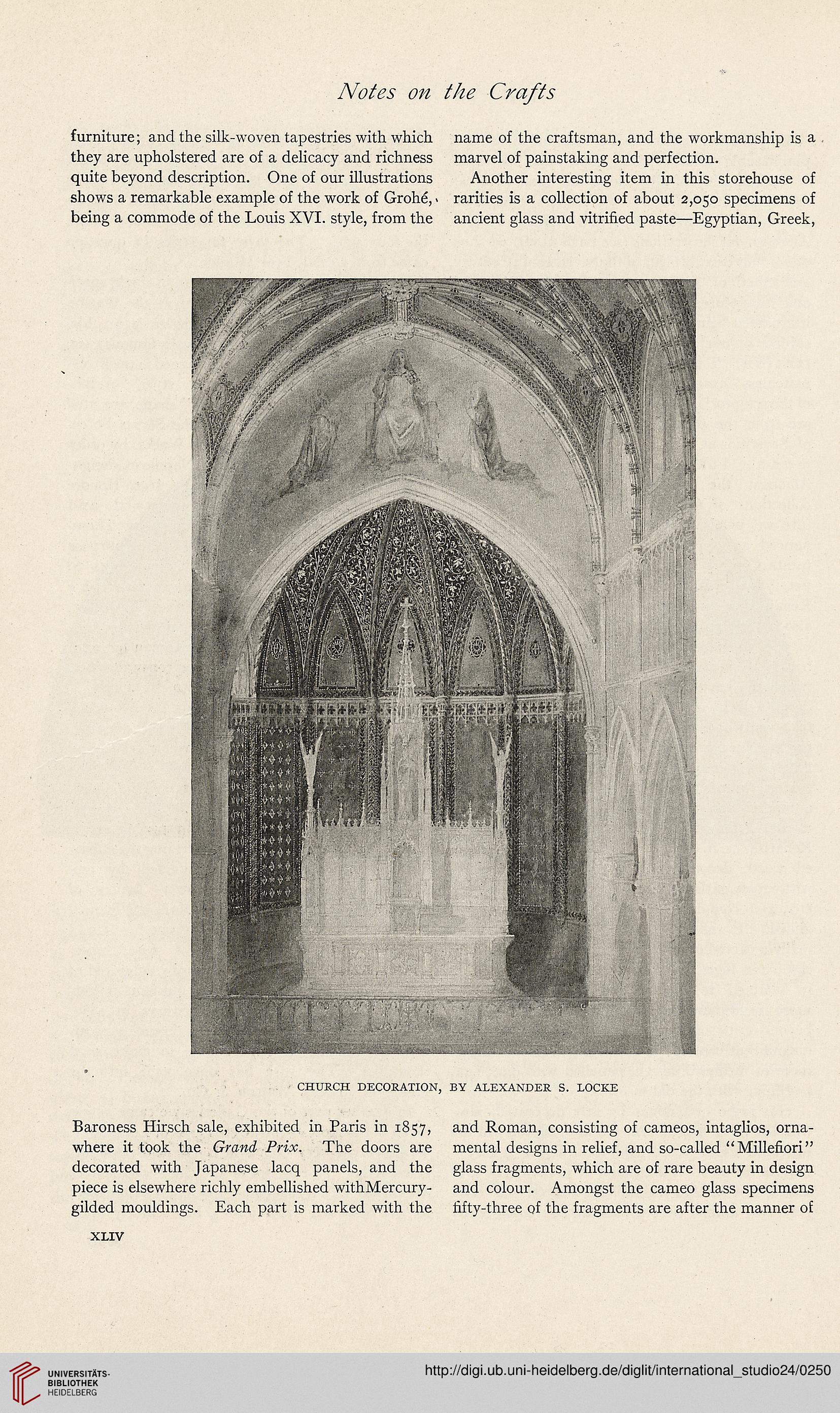International studio — 24.1904/1905(1905)
Zitieren dieser Seite
Bitte zitieren Sie diese Seite, indem Sie folgende Adresse (URL)/folgende DOI benutzen:
https://doi.org/10.11588/diglit.26963#0250
DOI Heft:
No. 94 (December, 1904)
DOI Artikel:Notes on the crafts
DOI Seite / Zitierlink:https://doi.org/10.11588/diglit.26963#0250
Notes on the Crafts
furniture; and the silk-woven tapestries with which
they are upholstered are of a delicacy and richness
quite beyond description. One of our illustrations
shows a remarkable example of the work of Grohe, <
being a commode of the Louis XVI. style, from the
name of the craftsman, and the workmanship is a
marvel of painstaking and perfection.
Another interesting item in this storehouse of
rarities is a collection of about 2,050 specimens of
ancient glass and vitrified paste—Egyptian, Greek,
CHURCH DECORATION, BY ALEXANDER S. LOCKE
Baroness Hirsch sale, exhibited in Paris in 1857,
where it took the Grand Prix. The doors are
decorated with Japanese lacq panels, and the
piece is elsewhere richly embellished withMercury-
gilded mouldings. Each part is marked with the
and Roman, consisting of cameos, intaglios, orna-
mental designs in relief, and so-called “Millefiori”
glass fragments, which are of rare beauty in design
and colour. Amongst the cameo glass specimens
fifty-three of the fragments are after the manner of
XLIV
furniture; and the silk-woven tapestries with which
they are upholstered are of a delicacy and richness
quite beyond description. One of our illustrations
shows a remarkable example of the work of Grohe, <
being a commode of the Louis XVI. style, from the
name of the craftsman, and the workmanship is a
marvel of painstaking and perfection.
Another interesting item in this storehouse of
rarities is a collection of about 2,050 specimens of
ancient glass and vitrified paste—Egyptian, Greek,
CHURCH DECORATION, BY ALEXANDER S. LOCKE
Baroness Hirsch sale, exhibited in Paris in 1857,
where it took the Grand Prix. The doors are
decorated with Japanese lacq panels, and the
piece is elsewhere richly embellished withMercury-
gilded mouldings. Each part is marked with the
and Roman, consisting of cameos, intaglios, orna-
mental designs in relief, and so-called “Millefiori”
glass fragments, which are of rare beauty in design
and colour. Amongst the cameo glass specimens
fifty-three of the fragments are after the manner of
XLIV




